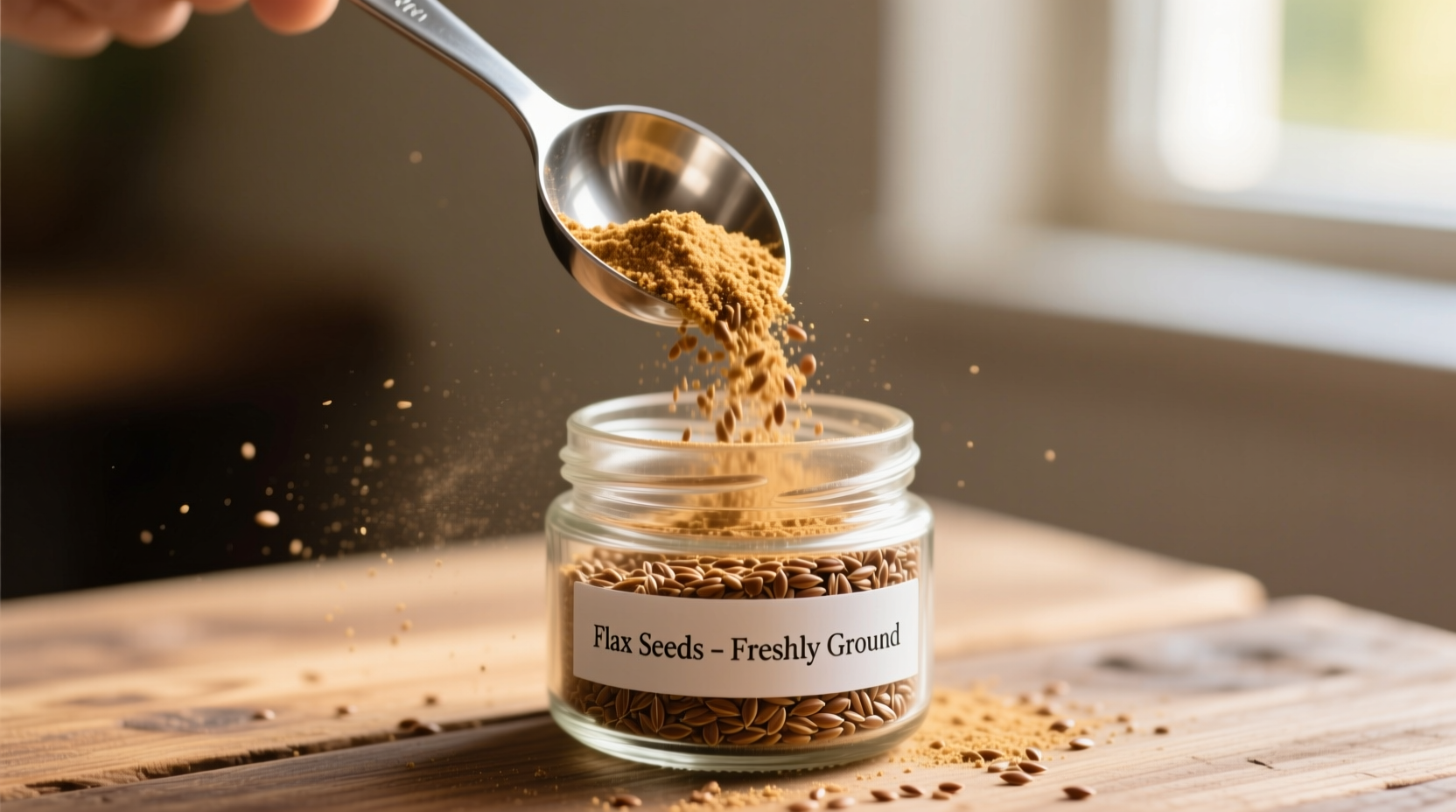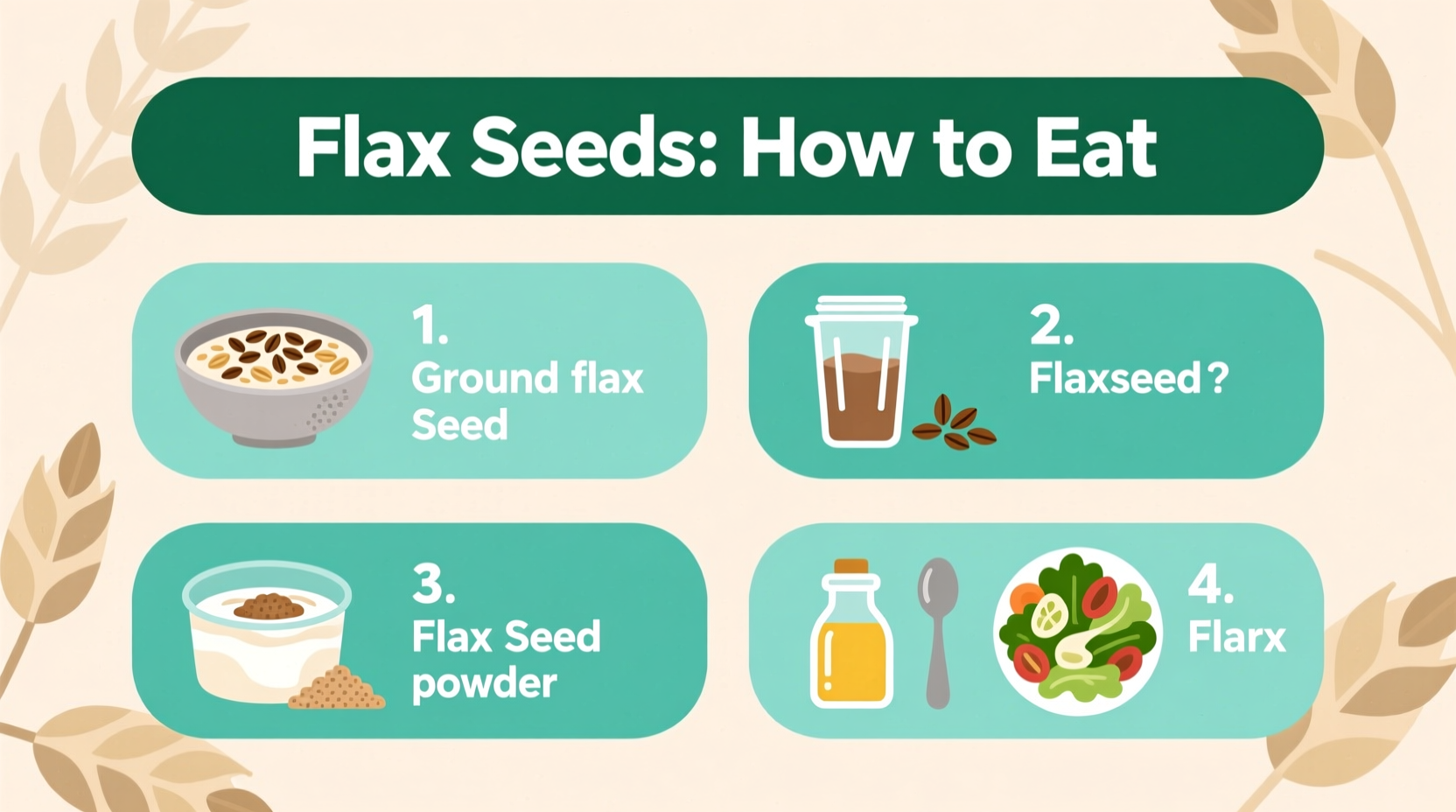Flax seeds pack a powerful nutritional punch with omega-3 fatty acids, fiber, and lignans—but only when prepared correctly. Many people unknowingly miss out on these benefits by eating flax seeds the wrong way. This guide reveals the science-backed methods to maximize nutrition while avoiding common mistakes that could waste your investment in this superfood.
Why Grinding Flax Seeds Is Non-Negotiable
Your digestive system cannot break down the tough outer shell of whole flax seeds. According to research published in the American Journal of Clinical Nutrition, ground flax seeds provide 300% more bioavailable alpha-linolenic acid (ALA) compared to whole seeds. When consumed whole, flax seeds simply pass through your system intact—like tiny nutritional time capsules with their benefits locked inside.
| Preparation Method | Nutrient Absorption | Shelf Life | Best For |
|---|---|---|---|
| Freshly ground | 95-100% bioavailability | 2-4 weeks refrigerated | Daily nutrition boost |
| Preground (store-bought) | 60-70% bioavailability | 1-2 weeks refrigerated | Convenience when grinding isn't possible |
| Whole seeds | 5-10% bioavailability | 6-12 months at room temperature | Decorative use only |
Your Step-by-Step Flax Seed Preparation System
Step 1: Grinding for Maximum Benefit
Invest in a dedicated coffee grinder (clean and dry) for best results. Process 2-4 tablespoons of whole seeds for 30-60 seconds until they reach a fine, sand-like consistency. The National Flaxseed Council confirms this texture maximizes nutrient release while preventing the paste-like consistency that occurs with over-grinding.
Step 2: Smart Storage Solutions
Ground flax oxidizes quickly due to its high fat content. Transfer freshly ground seeds to an airtight container and store in your refrigerator. For longer storage, divide into single-serving portions and freeze—this preserves freshness for up to 3 months. The USDA's Food Safety and Inspection Service recommends this method to prevent rancidity while maintaining nutritional value.
Step 3: Daily Incorporation Strategies
Start with 1 tablespoon daily and gradually increase to 2 tablespoons to allow your digestive system to adjust. Try these proven methods:
- Breakfast boost: Stir into oatmeal or yogurt (add after cooling to preserve nutrients)
- Lunch enhancement: Mix into salad dressings or sprinkle over soups
- Baking secret: Replace 1 egg with 1 tablespoon ground flax + 3 tablespoons water
- Smoothie upgrade: Blend with frozen berries and spinach for optimal nutrient pairing

Avoiding Common Flax Seed Mistakes
Even health-conscious eaters make these critical errors:
- Using expired products: Rancid flax emits a paint-like odor—discard immediately
- Insufficient hydration: Flax's high fiber content requires additional water intake (minimum 8 extra ounces daily)
- Overconsumption: Exceeding 4 tablespoons daily may cause digestive discomfort
- Heat exposure: Never cook with ground flax—add after cooking to preserve delicate omega-3s
The Academy of Nutrition and Dietetics emphasizes that proper preparation transforms flax from a nutritional disappointment to a powerhouse ingredient. "When prepared correctly, two tablespoons of ground flax provide more omega-3s than a serving of salmon," notes Dr. Sarah Z. Young in her comprehensive review of plant-based omega sources.
Special Considerations for Specific Diets
Flax adapts beautifully to various dietary needs:
- Vegan diets: Excellent egg substitute in baking (1 tbsp ground flax + 3 tbsp water = 1 egg)
- Gluten-free baking: Adds binding properties and moisture to GF recipes
- Weight management: The soluble fiber creates lasting fullness—studies show increased satiety lasting 3+ hours
- Digestive health: Start with 1 teaspoon daily if you have IBS or sensitive digestion
For those with thyroid conditions, the Linus Pauling Institute recommends consuming flax at least 4 hours apart from thyroid medication to avoid potential interactions. Always consult your healthcare provider before making significant dietary changes.
Frequently Asked Questions
Can I eat flax seeds without grinding them?
No—whole flax seeds pass through your digestive system undigested. You'll miss 90% of the nutritional benefits. Grinding breaks the tough outer shell, releasing omega-3s, fiber, and lignans for proper absorption.
How much flax seed should I eat daily?
Start with 1 tablespoon of ground flax daily, gradually increasing to 2 tablespoons. The FDA recognizes 1.6g of ALA per day as beneficial for heart health, which equals approximately 1.5 tablespoons of ground flax seeds.
Do I need to toast flax seeds before eating?
No—toasting destroys delicate omega-3 fatty acids. Raw ground flax preserves maximum nutritional value. Store-bought roasted flax has significantly reduced ALA content according to USDA testing.
Can I add flax seeds to hot beverages?
Add ground flax to cooled beverages only (below 120°F/49°C). Heat damages omega-3s and creates bitter compounds. Let your coffee or tea cool for 5 minutes before stirring in flax.
How long do ground flax seeds stay fresh?
Freshly ground flax stays optimal for 2 weeks refrigerated or 3 months frozen. Store-bought ground flax typically has a shorter shelf life due to pre-grinding. Always check for rancidity (sour or paint-like smell) before use.











 浙公网安备
33010002000092号
浙公网安备
33010002000092号 浙B2-20120091-4
浙B2-20120091-4